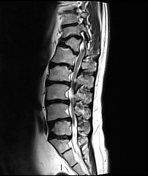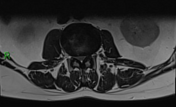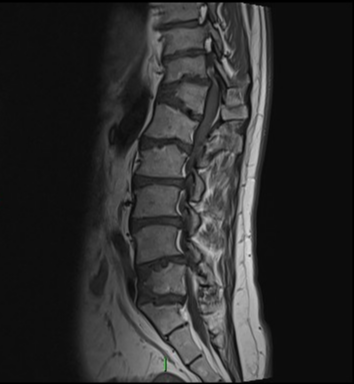Presentation
Presenting with bilateral leg pain of uncertain duration
Patient Data







Anterior beaking of T12 and L5 vertebral bodies in the mid-portion of the vertebral body.
Congenitally narrow central canal.
Severe canal stenosis at L2/3 due to a combination of congenitally narrow canal, posterior element degenerative change (facet joint arthropathy and ligamentum flavum laxity).
Case Discussion
This patient had a known history of Morquio syndrome, diagnosed at another institution in youth.
Morquio syndrome is an autosomal recessive mucopolysaccharidosis which results in accumulation of keratan sulphate and chondroitin-6-sulphate (C-6-S), which are two of the major proteoglycans involved in cartilage and bone1. The condition is associated with multiple spinal abnormalities.
This case demonstrates some of the spinal features of Morquio syndrome - specifically, anterior beaking of the mid-portion of the vertebral body, ligamentous thickening, central canal stenosis, disc protrusion and thoracolumbar kyphosis which are all thought to result from accumulation of keratan sulphate and C-6-S in the spinal ligaments and formation of fibrocartilaginous tissue 1.
The patient did not have any clinical features of spinal cord compression, an alternative cause for their pain was identified and their spine managed conservatively.




 Unable to process the form. Check for errors and try again.
Unable to process the form. Check for errors and try again.